
The trend of fitting WorldTour-capable frames with bars wide enough to double as clothes rails is sacrilege, isn’t it? Surely, bolting 42cm handlebars to medium-sized, range-topping race frames, from the likes of Merida, Specialized and Cannondale, is equivalent to tying a parachute to a jet plane. Or is it?
Many professionals have taken optimised setups to new heights, or rather, widths, with outlandish cockpits that make a 'narrow' 38cm arrangement seem positively spacious. Intermarché Wanty, for example, was spotted gripping 34cm handlebars at Omloop Het Nieuwsblad this year - a setup made possible by a bespoke finishing kit from team sponsor Newmann. What's truly intriguing is the economics behind this innovation. Carbon fibre manufacturing is expensive – in fact, a new mold for a handlebar size can easily rack up a bill in the region $20,000 to $30,000 - that's far from petty cash, even for the grandiose budgets of Ineos and UAE Emirates.
So, if the pros are investing in narrow handlebar technology, does it warrant your attention? More importantly, will it make a significant difference to your performance?
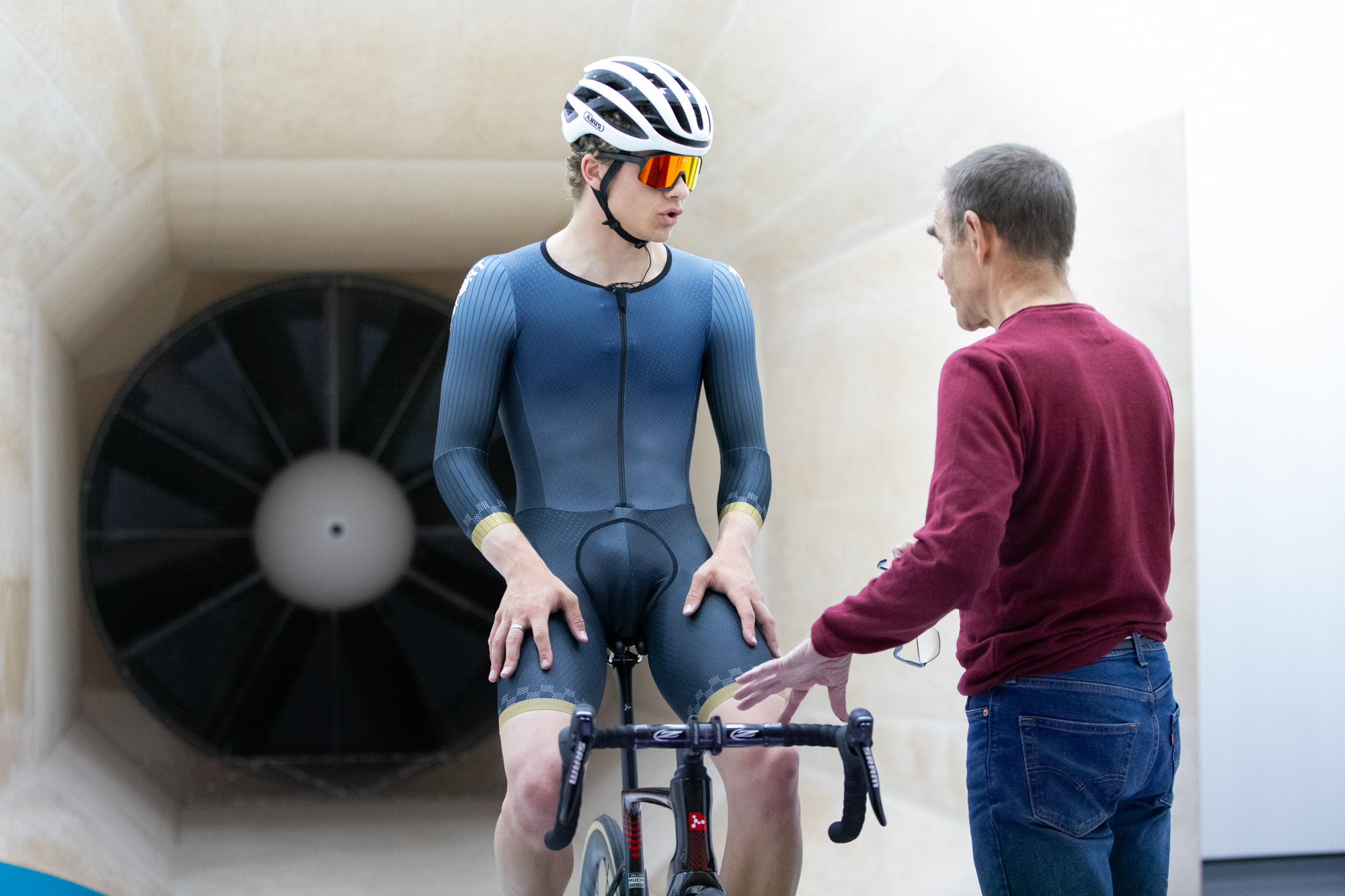
To reveal the answers, we headed to the Silverstone Sports Engineering Hub (SSEH), a state-of-the-art R&D facility, to test 36cm, 30cm, and 24cm handlebars. Located just outside the iconic racing circuit, SSEH is home to a whole host of test rigs and even a rolling road developed to emulate the cobbles of Paris-Roubaix. Most relevant and exciting for us though, is the centerpiece of the operation - a cycling-specific wind tunnel. This two-million-pound aero nerd’s toy is optimised for cycling speeds, thereby providing remarkably accurate data - far better, in fact, than a Formula One tunnel built for higher speeds.

The testing
The handlebars we chose come from British brand WX-R. WX-R has recently brought its expertise to the road, having honed its craft on the track, supplying bikes for clients such as the Malaysian track cycling team at the Tokyo 2020 Olympics.
WX-R provided us with two bars for evaluation: a 'narrow' handlebar, boasting dimensions of 30cm at the top and 37cm at the bottom, and an 'ultra-narrow' variant measuring a mere 24cm from center-to-center at the tops and 35cm outside edge-to-edge at the drops.
Our testing protocol involved comparing these somewhat extreme setups against a standard 36cm center-to-center handlebar from Zipp - a width commonly favored by racers and world tour athletes, already considered narrow by most standards.
You might be wondering why I have explained those widths in quite such a persnickety fashion - the reason, shock, is the UCI’s ruling on handlebars. Regulations stipulate that handlebars must not measure less than 35cm from outside edge to outside edge at the widest point, and crucially, that means that all of the handlebars we have tested are UCI legal - thanks in no small part to some pretty serious bar flare.

Testing was pretty thorough. We tested five different body positions, on three handlebars, at three different yaw angles to gather a well-rounded picture of how bar width affects drag in different situations.
Position 1 was the ‘comfort position’, a familiar stance, perched atop the hoods in a natural riding posture, serving as the baseline for everyday cycling. This benchmark was tested at speeds of 35, 45, and 55 kph for our baseline handlebar, and subsequently 35 and 45 kph for our test handlebars.
Next up was position 2, the 'neutral position'. This posture had slightly dropped elbows and was similar to how you would expect to see riders in a relaxed bunch. Tested at speeds of 35, 45, and 55 kph, this position offered insights into performance under varying levels of exertion.
The subsequent trio of positions are commonly seen at race speeds, so were only tested at the faster speeds of 45 and 55 kilometers per hour. Position 3 embraced a 90-degree elbow drop forming our ‘aggressive position’. This is the favored stance among breakaway riders, albeit somewhat more demanding and therefore a position that requires training for sustained endurance.
Keeping my head in the same position, but shifting my hands to the drops, we find our ‘aggressive drops’ position - position 4. This provides a rider with far more control and would usually be adopted by riders in the bunch, battling for position in key race moments such as sprints.
Lastly, position 5. We experimented with a ‘super aggressive’ position. This posture was characterized by further dropped elbows, to create a somewhat ‘track sprint position’. It was not remotely comfortable but provided an interesting insight into the impact of more radical positions.
The results

After putting in a solid two hours in the wind tunnel, the verdict is in: narrower handlebars do make you faster. No question about it. Our tests showed consistent aerodynamic improvements across the board, regardless of body position, speed, or wind angle. But what were the key takeaways?
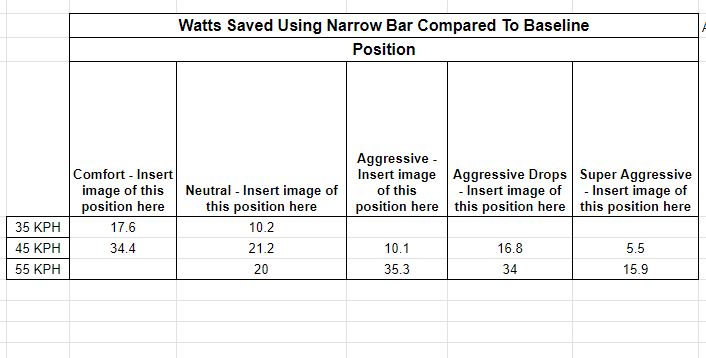
Well, let's start with the most relatable finding, swapping out a standard 36cm handlebar for a narrower 30cm one resulted in a whopping 17.6-watt saving when cruising at 35kph in position 1. As our wind tunnel engineer, Mike Twelves, pointed out, that's a tangible benefit that any rider can appreciate.
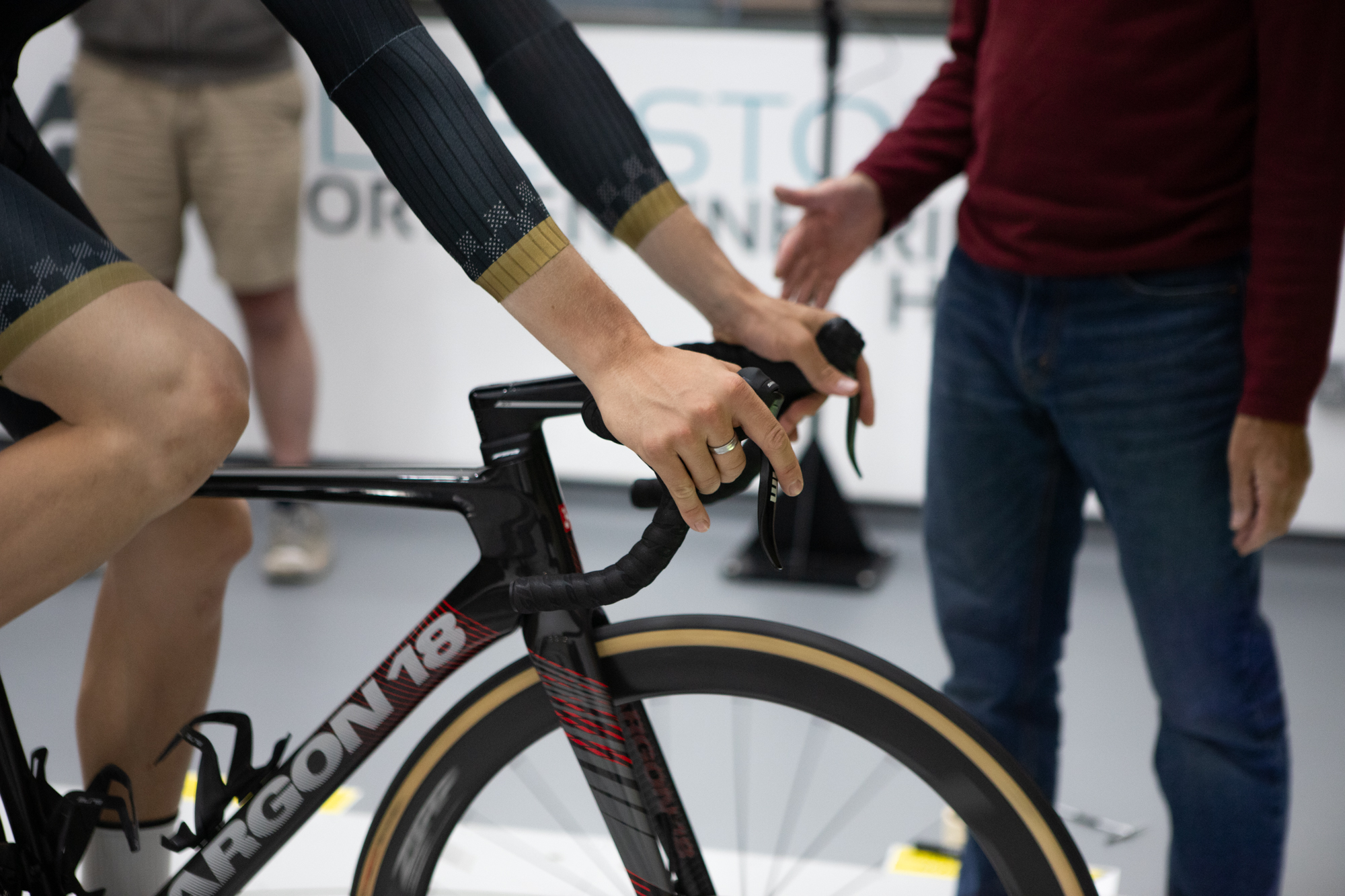
"17.6 watts at 35kph is roughly a 10% improvement," Twelves noted. "And considering the minimal impact on bike handling, it's pretty staggering. Honestly, I wasn't expecting such a significant result."
And I have to agree with Twelves here. Despite initial reservations, I found myself surprisingly comfortable on the 30cm bars during testing. Plus, with the drops flared out to 37cm, there's still plenty of control when you need it.
Moving on to position 2, where the arms are dropped slightly, the gains remained impressive. We're talking about 10.2 watts saved at 35kph and a sizeable 21.2 watts at 45kph compared to our base bar. That's a bigger efficiency boost than most aero wheel claims out there.
And the trend continued as we got more radical with our body positions. Even in the aggressive breakaway stance, we still saw a respectable 10.1 watt saving at 45kph, with the only anomaly being the aggressive drops position, where savings actually increased to 16.8 watts at 45kph and a whopping 34.0 watts at 55kph.
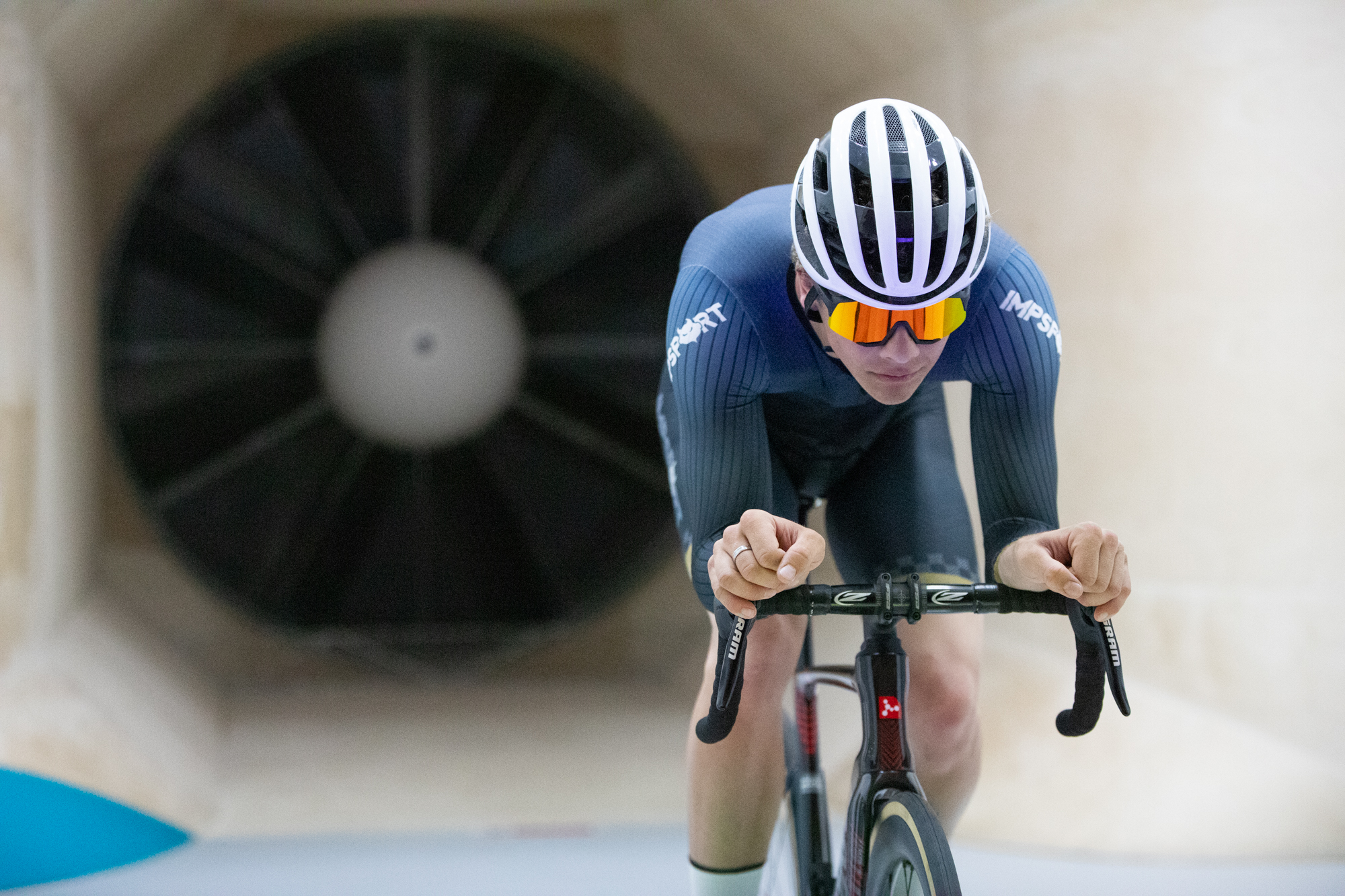
Now, it's no surprise that going ultra-narrow with 24cm bars was even faster, but the gains weren't as mind-blowing. In the neutral position, the ultra-narrow bars only saved 3.3 watts at 35kph and 3.1 watts at 45kph. But as we'll discuss later, this is still pretty exciting news for riders of all levels.
Data showed our testing to be reliable too. Twelves was confident in the small variances in our data when compared to our baseline runs, and added that the small variations demonstrated that I was genuinely comfortable, particularly on the 30cm bars.

However when in position 3 on the ultra narrow 24cm bars, things get more interesting. The gains here were huge, in some cases saving over 50 watts compared to our baseline position 3 run, and we think this was because of the lever position when using these bars.
To make the 24cm bar UCI legal, there has to be a large degree of bar flare, which inherently pushes the hoods even further inboard. Position 3 sees me holding onto the levers by the hoods, meaning I can achieve a time trial like position.
Oh an now is a good time to mention - that 49.9 watt saving above looked to be the one anomaly we had during our testing, so best to ignore that. We believe this was a body position error on my part, and it looks as though I accidentally found a bit of a sweet spot for head position, which shows just how much optimisations can save you...
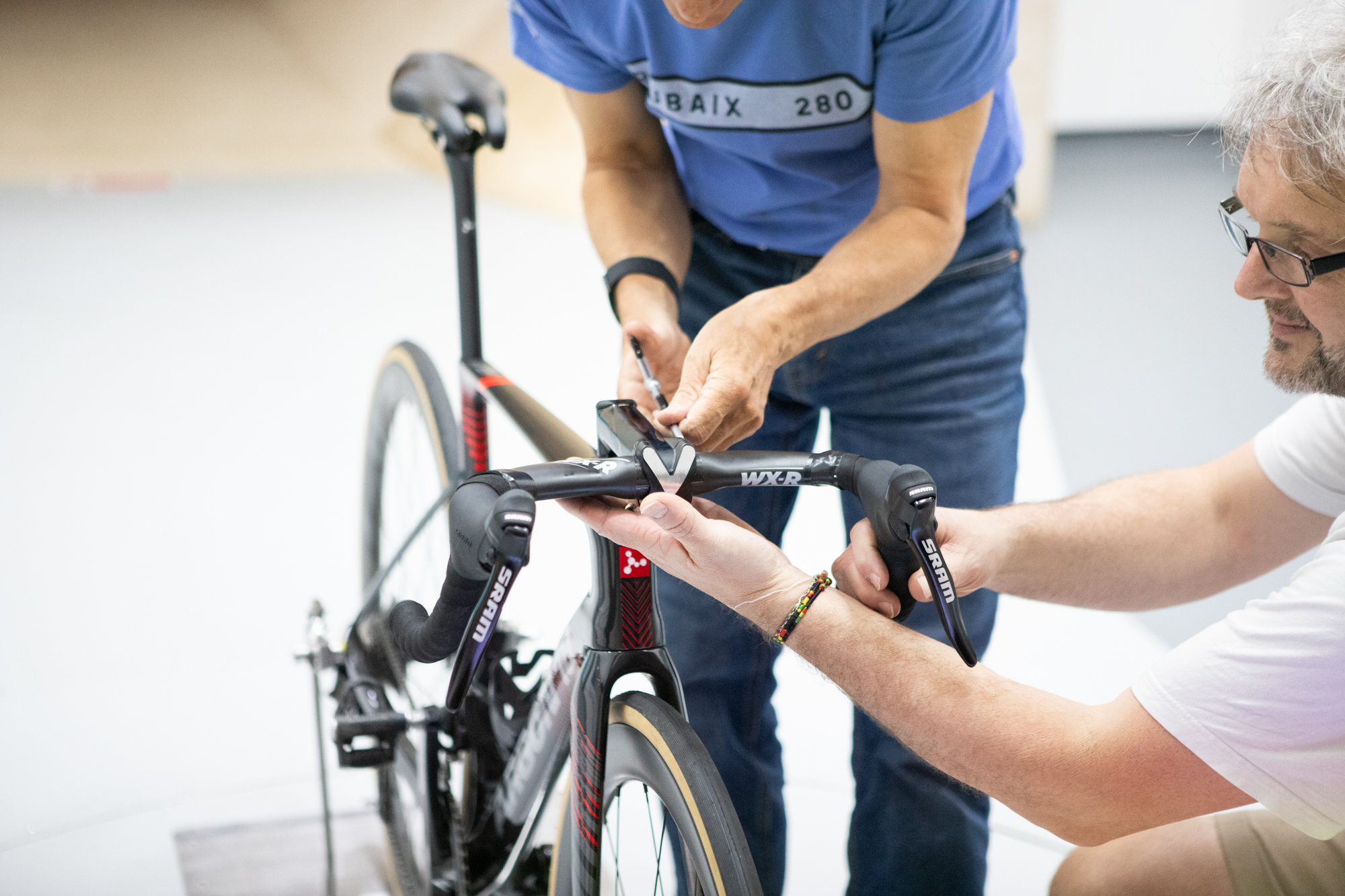
Our final test runs gave us the opportunity to experiment with an extreme body position, using the narrow 30cm handlebar. We tested the aggressive drops position against an extreme ‘shrug’ position at 45kph and 55kph. The goal here was to show how a narrow bar can facilitate a more aerodynamic body position, albeit with some training - and it didn’t disappoint. At 45kph, the shrug position saved a further 24.7 watts compared to the aggressive drop position, and at 55kph, this grew to 42.6 watts. Compare that to the baseline handlebar, and you’ll find a near 70-watt saving.
Twelves and I agreed that this was not a position you could hold for long periods of time, at least not without a lot of yoga and a very good chiropractor. Yet for short periods, it can be a lethal weapon in races.
“Knowing that you are saving nearly 70 watts may well be all the motivation you need to hold that position to close a gap,” explained Twelves, “and in the decisive moments of a race, being able to go from the upper echelons of VO2 max down to the realms of threshold power is unbelievably valuable!”
Despite prejudice against these narrow controls, I believe these handlebars have wider applications than one might imagine. The bottom line is that in many of our test positions, I was faster, more comfortable, and after an hour on the bike, felt no difference in my cornering confidence - to me, that’s about as ‘free’ as speed gets!
So what does this all mean for the future of the bike industry? As is the case with anything performance-related, initially we’ll see narrow bars proliferate at the top level of our sport. I predict that over the next twelve months, you will see far more experimentation with handlebar width, particularly in light of the UCI banning turned-in lever hoods.
Of course, narrow bars certainly aren’t for everyone. Applications such as gravel bikes or endurance road bikes, don’t have the need for more speed and heavier steering. Race bikes, however, are another story. Aero gains are becoming harder to find, so expect to see narrow cockpits improving the ‘system efficiency’ over the next few years and for this tech to trickle down from top-tier racing.







